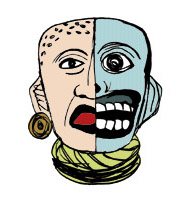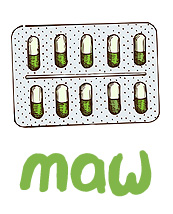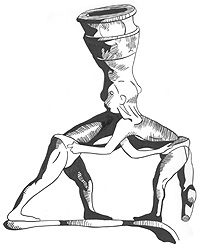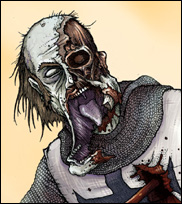James:
Who, in your experience, exhibits greater pain tolerance? My own experience indicates that the average Dindu has the pain tolerance of a 12-year-old. This was never more glaringly obvious then when I was working as an ER Tech in Detroit. One notable example was one night when a young Dindu, of approximately 19 years of age, was brought in for a sprained ankle. He was moaning and demanding pain medication to relieve the pain. What made this stand out was the fact that, across the aisle from him, was a completely lucid, mid-30's, paleface sitting quietly while waiting to be seen for the traumatic amputation of the tips of the four fingers on his right hand. I conversed with him for a bit and he seemed more embarrassed than anything, since he lost his digits because of his own negligence.
How does this assessment stack up to your experiences in the ring?
-WellRead Ed
This is a great question Ed. The question must be separated into two parts:
-experiencing more pain
-handling the pain
My experience fighting and coaching has ben overwhelmingly with Caucasian Americans and African Americans. My other experience with pain tolerance is working as a grocery clerk, an occupation where almost all the men develop back, knee and shoulder conditions.
In terms of outside experience and observations I would note that Latino and Asian fighters are well know for being tougher than blacks and whites, which again, begs the question, is it physical or psychological—which would lay it at the door of cultural conditioning.
A medical study in the late 1990s determined that the pain tolerance of Vietnamese hospital patients was astronomically higher than American patients, with them consuming a tiny fraction of pain medications compared to Americans. This is a strong indication that cultural conditioning or psychology weighs most heavily.
Fighter Pain
The only differences I have noted along racial lines is that black men have more sensitive ankles, feet and shins, which really comes down to a body structure consideration as they have elongated and more lightly muscled lower legs.
In fighting, all of these guys are mentally tough, so it is basically a matter of body-typing.
Fat guys have a hard time handling head trauma and sticks strokes and kicks to the thigh. This has to do with their own body loading the thigh and neck and amplifying force transmission.
Likewise muscled up guys suffer more from muscle hits and thin guys suffer more from joint and bone hits.
I can absolutely guarantee you that most black guys experience more foot, ankle and shin pain than their counterparts do when struck there, or when a nasty bastard like Stump [my step father] "walks all over their feet" in the ring.
Laborer Pain
At work, heavy guys, muscular guys and light guys all seem to suffer the same levels of pain, with thin guys suffering more shoulder pain, big guys suffering more knee pain and black guys suffering less low back pain, as their butt muscles are bigger and do not permit the hamstrings to pull as hard on the low back—as with with no-ass white boys like me.
Of men who experience pain, younger men are more likely to fold, even though increased age increases pain experienced, marking this as a psychological, culturally influenced quality. The toughest guys I've worked with were big-boned but not overweight and were Polish, and black guys who grew-up sharecropping in the south in the 1950s.
Pain in the Emergency Room
I have numerous friends and training partners who work in hospitals. [nurse, radiologist, tech, surgeon, orthopedic tech] They have all told me that blacks tend to require and demand more pain medication. The other group that stands out as a secondary rank of sissies is white bikers.
There is a clue here, as bikers are notorious pill poppers and drinkers and spend much of their time drugged up, as do most urban blacks, although they use less pills and more "weed."
Pain on the Street
My experience dealing out pain in street situations is that blacks and whites—adjusting for body type—do not seem to experience different levels of pain, but the blacks tend to panic and effectively turn into women when hurt—but only if they know they're hurt. This points to mental discipline or lack thereof. We are both dealing with urban blacks who are raised almost exclusively by women, women who generally beat them at severity levels we would expect among drunken men who hated each other. Might it be that when in the clutches of a 350 pound monster, striking them with shoes, belts and closed fists, that the young black child learns to behave as if they are hurt worse than they are in order to satisfy the need of the giantess to dominate painfully?
Ed, you did note the lesser pain tolerance of children [by comparing adult Dindus with 12-year-olds in general] observed in your work. I posit that many black folks who are raised up by abusive giantesses get in the habbit of dramatizing their injuries as a survival mechanism. There is also the added benefit of slip-and-fall law suits based on dramatic pain expression. How many YouTube videos have we seen of aggressive blacks all of a sudden turning into whimpering babies?
Ed, from my experience with figheters, working men, and undisciplined adversaries of all types, I think that we are talking tolerance, not pain and that undisciplined people, who have been fed high stimulant foods since birth, are regularly drugged and drunk by age 12 and who are not encouraged to develop impulse control, will have a tendancy to lack tolerance for pain.
The Punishing Art











This is a fascinating topic. I predict a lot will be revealed by genetic research, for example, redheads don't respond as well to certain pain drugs, and certain populations are much more prone to drug and alcohol addiction, partly based on their physical ability to clear the substances from their bodies. The easiest to study will be the efficacy of drugs by quantity and class.
Sensation of pain is subjective but wouldn't it be fun to test? I guess that is part of what you do as a coach. Fighters are self selected to be people who are willing to take some punishment.
Different injuries also cause different kinds of pain. If I cut myself in the kitchen, my only concern is not bleeding into the food, but burns drive me a bit wild with pain, so that I don't even want people talking to me.